










Suquamish Tribal Council
Meets Dec. 5 & 12. Agenda and links will be sent via Weekly Update & SUN Texts.
PME Board
Meets Dec. 14. Contact Emily Sato at emilysato@ clearwatercasino.com or call (360) 598-8703 if you would like to attend.
Suquamish Tribal Gaming Commission

Meets Dec. 1 & 15. Museum Conference Room. Contact Angela Brainerd (360) 394-8652 for details.
Suquamish Seafoods Board
Meets online Dec.13. Seafoods Retail is open Thurs-Sun. Contact Shanel Carlson at (360) 394-8512 for details.
Suquamish Museum
New hours: Wed-Sun, 10am-5pm. Mon & Tues by appointment. For board meeting info, contact TJ Johnson at (360) 394-8499.
Monthly meetings are on first Tuesdays at 5:30pm at Suquamish Warriors Vet Center. For information, contact Bill Gemmell at (360) 536-0007.
Wisdom Warriors Support Group
Meets second Wednesday of each month. Next meeting is Dec. 14, 2 – 4pm in Council Chambers.
Through Dec 22, Toys for Tots in Tribal Admin. lobby. New, unwrapped toys collected by Suquamish Warriors.
Nov. 30, 3:30pm – 7:30pm Getting Ready for Winter, Culture Night qʷibid tiił pədt’əs at House of Awakened Culture. Harvest Fest has been merged with Culture Night, with the Traditional Foods and Medicine Program providing food and cultural activities. For more info call (360) 394-8576.
Dec. 1, 10:30am – 1pm PME Tribal Elders Holiday Distribution, Santa and Elves will be at the Beach Rock Music & Sports at the Casino Resort. Buffet brunch will be provided. Elders not present will have checks sent by mail. Questions: Call Irene Carper, (360) 340-3042.
Dec. 1, noon – 6pm. Giveaway of graham cracker kit for “Longhouse” building competition at the Old Tribal Center. While supplies last. Winners will be announced at the Dec. 9 Community Christmas party.
Dec. 1, 6pm – 8pm Tree Lighting at the Resort Hotel Lobby.
Dec. 3 & 4, and Dec 17 & 18, 9am-4pm Suquamish Holiday Bazaar at House of Awakened Culture. Free admission, local vendors, handmade gifts.
Dec. 4th, Noon – 4pm, Elders Holiday Party at Kiana Lodge. Choice of salmon, ham, or prime rib, free raffle items, gifts, comedian “Krazy” Kasey Nicholson.
Dec. 7, Suquamish Christmas Tree Giveaway Deliveries for Elders. Others pick up at Family & Friends Center. Call (360) 394-8576 or Fitness Center (360) 3947142 for details.

Dec. 8, 1 – 4pm Elders Holiday Ceramics Painting Trip, Dancing Brush Studio, 18846 Front St. NE, Poulsbo. Elders provide their own transportation, but contact Della at 360-394- 8417, or Melissa at 360-394-8472 for help coordinating carpools.
Dec. 9, 5:30 – 7:30pm Community Christmas party, at House of Awakened Culture for enrolled Suquamish members and their families.
Dec. 16, 1 – 3pm Elders Cookies & Hot Chocolate Social, Elders Lodge. Guest: DCD will discuss housing issues.
Dec. 19 Christmas gift cards will be distributed for Elders Pick up at Human Services office, 8am – 4:30pm; closed from 12 – 1pm for lunch.
Dec. 20-22 Christmas gift card distribution for all other members. Pick up at Human Services office, 8am – 4:30pm; closed from 12 – 1pm for lunch.
Dec. 24 – Jan. 2 Government offices closed for Winter Break.
Dec. 31, doors open at 11am; show starts at noon. NoonYears, Danny Vernon’s Illusion of Elvis Clearwater Event Center. Free admission 18+. Party favors while supplies last.
Published monthly by the Suquamish Tribe: 18490 Suquamish Way, Suquamish, WA 98392
Email us at: communications@suquamish.nsn.us Send letters to: Suquamish News Editor, PO Box 498, Suquamish, WA 98392-0498
Letters should include the writer’s full name, address, and home telephone and may be edited for clarity and space.
All photo submissions must be made in JPG or PDF form, with resolution of 300 dpi or more.
Leonard Forsman Chairman
Josh Bagley Vice-Chair
Windy Anderson Secretary
Denita Holmes Treasurer
Rich Purser Member
Sammy Mabe Member
Luther Mills, Jr. Member
Leonard Forsman Editor-in-Chief
Catherine Edwards Executive Editor
Sarah van Gelder Managing Editor
Jon Anderson News Editor
JoAnn Joe Photography/Design
Georgia Browne Layout and Design
Editorial Policy
Publishers of the Suquamish News reserve the right to refuse publication of letters to the editor and guest editorials. Submission of editorials and letters is encouraged. However, they represent the opinion of the author and not necessarily that of the Suquamish Tribe. As such, we reserve the right to refuse to print any letter, for any reason.
Reproduction of Suquamish News, in whole or in part, without written permission from the Suquamish Tribe is strictly prohibited.
20-unit, $9.5M townhouse project will be first of its kind for Tribe
Tribal members got an overview of plans for a new $9.5 million, 20-unit townhouse develop ment set to begin next year in Suquamish Shores. Com munity Development staff outlined plans for the complex at a Nov. 10 virtual town hall meeting.
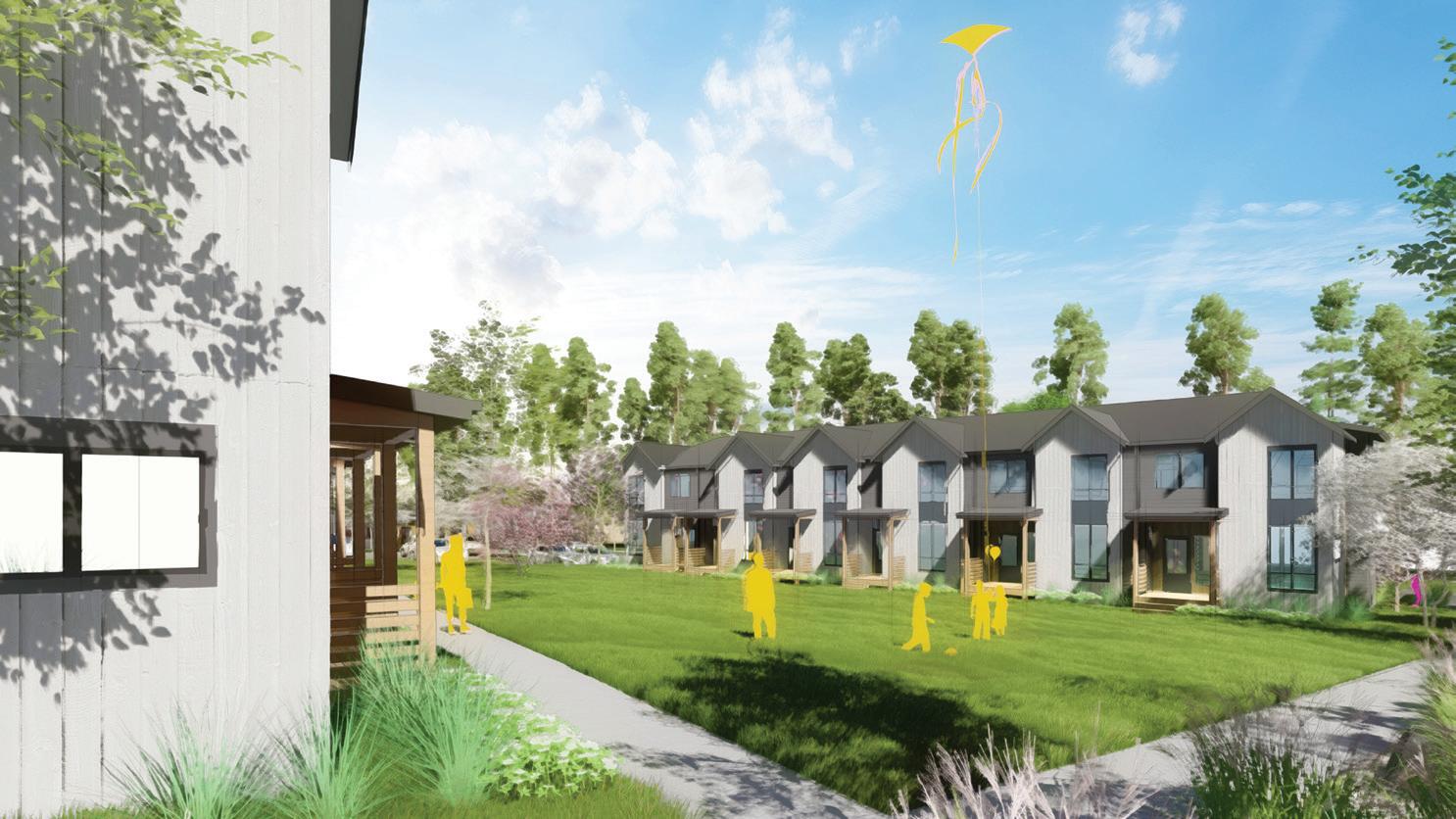

A short walk from the Tribal Administration Building and the new Healing House health clinic, the neighbor hood will be built just off Division Avenue, where Kalee tan Lane meets Enetai Lane.
In a first condo-style housing project for the Tribe, the neighborhood will be built across four main buildings and include:
• Eight 1,200-square-foot 2-bedroom townhomes
• Eight 1,500-square-foot 3-bedroom townhomes
• Four 1,672-square-foot, 4-bedroom townhomes
The vast majority of the townhomes will be two-story units, with 17 units equipped with a living room, din ing room, kitchen on the ground floor, and bedrooms on the second story. The remaining three units will be sin gle-story ADA accessible homes.
All units would be side-to-side with no one living above or below, and each will have a deck or patio in the back as well as a front porch off the main entry.
The four main buildings would each face into a central green space common area. This is a first for the Tribe, Community Development Director Scott Crowell told the several dozen Tribal Members who gathered on the Zoom call.
“We’ve always built single-family homes. I understand many people want that, but the problem is we can’t build them fast enough with the amount of money we have.
And while our housing list continues to grow.”
Plus, many Tribal Members have said they’d prefer small er apartment-style communal housing without all the up keep and maintenance hassles that come with a yard and a single-family house.
And, for those that just want affordable housing as quickly as possible, building town homes means, “we can build more units for less money. And get them built much fast er than individual single-fam ily lots,” said Crowell.
Dean Kelly with Rice Fergus Miller Architects, hired by the Tribe to create the development, walked Tribal members through a presentation on the latest plans.
“What we really liked about this design is the opportu nity for common space. The vision is to create a shared common area in between the townhome buildings with open lawns and picnic tables, trying to create a commu nal feel throughout the development,” said Kelly.
Plans call for two parking spots for each unit in a cen tral area along Enetai Lane, with half of them covered stalls. Sidewalks lead in from the parking area to resi dents’ front porches. Another seven parking spots on Kaleetan will provide overflow and guest parking.
There will also be some bike parking areas, as well sev eral parking spots equipped for electric vehicle charging.
“We really wanted to keep the parking close enough to the homes, but not have them become the main element of the development so that we could leave some of this green space open for the common areas and create an attractive place to live,” said Kelly.
To the north of the development will be a buffer zone with a stream. Invasive species that have overgrown the area will be cleared away, and em bankments will be reinforced to com bat erosion “and get that stream back to where it should be,” said Kelly.
During the meeting, one Tribal member asked about cross contam ination into adjacent units from po tential toxic drug use.
“That was one of our biggest con
cerns going into this style of development,” said Crow ell. To protect from that, air-gapped firewalls will be in stalled between each unit with special sealants creating a tight assembly that should prevent anything from going between units.
Each unit will also be equipped with its own heating and cooling systems, so there will be no shared air from central systems that could crossover between units.
Responding to another Tribal member who asked about providing parking closer to the individual units, Crowell said that would mean not having the open com mon space.
“That was floated earlier in the planning process, but Tribal Council — after visiting similar projects on other reservations, including Lummi and Squaxin Island — heard from residents who told us they liked having this center area being a nice open area.”
And while it will mean a short walk for residents to get from their car to their front door, it won’t be much.
“The closest parking stall to the farthest unit would be 90 feet. So, basically, the distance from home plate to first base,” said Crowell. “From the farthest stall to the far thest unit, it would be a walk from about home to second base.”
With the basic outline for the housing project complet ed, detailed planning is set to begin, said Crowell.
“Now we’ll be looking at which materials will be used, at site prep and grading, and at all the fine details, like exactly where pumping stations will go.”
Construction is expected to begin summer 2023 and take about one year to complete, said Crowell.
By Jon AndersonSeeing flashing police lights in the rearview mirror can be enough to ruin your evening. But the Suqua mish Police, and other law enforcement organizations throughout the state of Washington, are in the midst of trainings designed to assure your encounter with a po lice officer is professional and safe.
Under terms of Washington’s new de-escalation law, po lice officers are required to take trainings in working with those experiencing mental health challenges and people in the LGBTQ+ community, on de-escalation, and on other topics related to their interaction with the public.
According to Suquamish Police Chief Mike Lasnier, the Suquamish Police are ahead of most other local po lice forces in complying with the law. And, because they work in a close-knit community, and know many Tribal members and other residents, Suquamish Police officers already put a priority on building relationships of re spect and trust with the public they serve.
Still, de-escalation skills are important tools for assur ing that a police encounter does not spiral into violence that can endanger officers, the person being stopped by police, and bystanders.
The techniques of de-escalation include the following, according to Suquamish Police Sergeant James Dean, who coordinates the department’s training program:
• When possible, slow down action to allow time for all to think before they act;
• Carefully analyze a situation before taking action;
• Talk and listen before acting, when possible;
• Consider alternative approaches and resources that may be available, especially when mental health or substance abuse challenges are involved.

Some of these techniques are quite different from those taught years back in police academy. According to Lasnier, the current trainings help make sure officers trained at different times are all on the same page. This is also important when area police units collaborate during a major incident or when they provide routine back-up to each other. To assure they are working to gether effectively, the Suquamish Police Department is collaborating with the Kitsap County Sheriff’s Depart ment and other area law enforcement to share trainings and practice de-escalation scenarios.
At the center of the de-escalation approach being taught is the idea of “procedural justice,” which involves being fair in the policing process, transparent in actions, providing opportunities for others to express their views, and being impartial in decision making, accord ing to Dean.
The training focuses on the “LEED” model, Dean said. The model, promoted by the state’s Criminal Justice Training Commission, is a reminder of how to conduct “justice based” policing, with a focus on communica tions skills.
Lstands for Listen: Allow people to tell their side of the story and to vent if necessary. Let them know they’ve been heard and will be treated with respect.
E Estands for Explain: what the officer is doing, what the suspect can choose to do, and what’s going to happen.
stands for Equity: Police action must be fair and carried out without bias. And it should show that the person’s opinion was taken into account.
Dstands for Dignity: The officer acts with dignity and respects the digni ty of those they encounter.
The police are also receiving training in mental health as part of the new state requirements, and in the some times difficult relationship of police officers with the LGBTQ+ and non-binary gender community.
Drawing on lessons of the Holocaust, officers are learning about the dangers of stereotyping, bigotry, and fanatical leadership, and reflecting on their role in a democratic society as defenders of the rights of the people they serve.
The Suquamish Police are also engaged in trainings out side the requirements of the new law, including training on working with people with substance abuse disorder. And, along with Kitsap Strong, the Suquamish Police helped develop a course in trauma-informed interviewing.
De-escalation techniques are now becoming part of all the training protocols of the Suquamish Police, ac cording to Chief Lasnier.
Training is important to the quality of police inter action with the public, but so is the emotional stability
of officers. There is a connection between officers’ emo tional and mental wellness and their capacity to be ef fective. Many officers are veterans of war, according to Dean, and they know that PTSD can sometimes affect their day-to-day work.
“I want to make sure the people I supervise are emo tionally stable,” Dean says. “If there is something going on, I tell them don’t be afraid to say, ‘I need some time off.’ Otherwise, people could get hurt.”
“Back in the day, we were told to suck it up. We don’t want that mentality,” he added.
So if you see those lights flashing in your rear view mirror, or are approached by a Suquamish Police officer, it might be helpful to remember that these officers have been trained in procedural justice, and that protecting the dignity of all involved is at the heart of this approach.
Moreover, Lasnier says, police officers wear body cameras, and interactions with the public are recorded, so if you, or members of Tribal Council, want to review what happened later, you can do that.
“The Tribal Council, elected by Tribal citizens, pass laws. It’s our job to make sure that those laws are enforced, that the Tribal community is safe, that property is not destroyed, and that the Tribe’s fishery and forestry resources are pro tected,” Chief Lasnier said. Having Tribal laws, courts, and police are part of what it means to be sovereign.
By Sarah van GelderTheNational Native American Veterans Memorial was dedicated on Nov. 11, in Washington, DC, and five Suquamish Warriors were there. The delegation included Ed Midkiff, Ed Carriere, Jim Henry, William Gemmell, and Chuck Wagner.
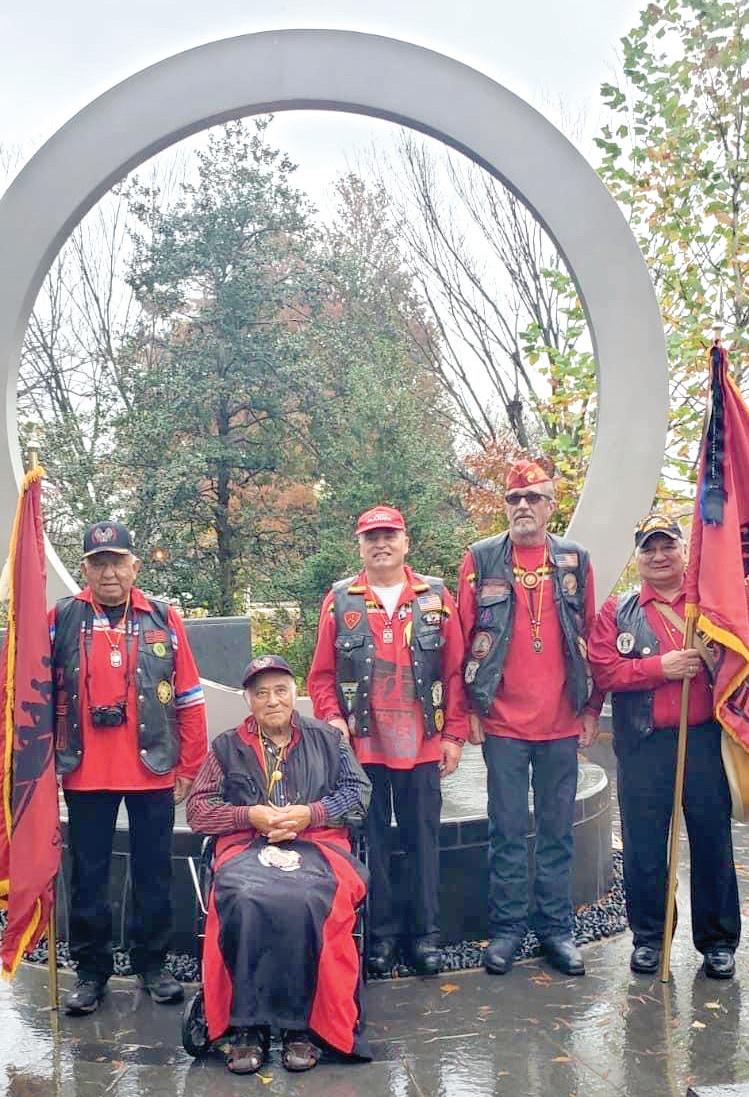
The day began with a Native veterans procession
through the National Mall to the memorial at the Smith sonian’s National Museum of the American Indian. Jim Henry, an Army veteran who was stationed in Ko rea in 1964 and 1965, said he is grateful to the Tribe for sending him and the other veterans.
“It was powerful to see all the Native veterans there from all of the lower 48 states, and some from Canada,” he said.
“I appreciated seeing how many Native women veterans were there, it was a really powerful thing, emo tionally and spiritually.”
Suquamish has a deep history of involvement in every campaign since World War 1, he said. Nonetheless, many of those they encountered from the east coast and the Midwest had not heard of the Suquamish Tribe.

“People were coming up to us and saying, where are you guys from? How do you pronounce your Tribe’s name?”
The Memorial is made up of a stainless-steel circle balanced on a carved stone drum.

“There’s an eternal flame at the bottom of it that will be lit 24 hours a day,” Henry said.
The memorial has water for ceremonies, benches for gathering and reflec tion, and lances where visitors can tie cloths for prayers and healing.
By Sarah van GelderSuquamish Warriors at the National Native American Veterans Memorial, from left: Jim Henry, Ed Carriere, William Gemmell, Chuck Wagner, and Ed Midkiff.
Casey Sixkiller (Cherokee) and the EPA Region 10 ad ministrator accompanied Administrator Regan. We em phasized the fragile state of our ancestral waters and the spiritual, cultural, and economic importance of our fish eries to our citizens, asking him to use his authority and resources to help us protect the Salish Sea from pollution.
The Muckleshoot Tribe hosted a meeting between the Tribal Leaders Congress on Education and representa tives of the White House Initiative on Advancement of Indian Education, along with Tribal leaders and staff, native students, and state officials and staff on strategies for improving outcomes for our students in Tribal and public schools.
encourages the practice of wholistic health treatment. I was invited by Brenda Loew who was a partner to a late friend to me and the Suquamish Tribe known as “Hunting Bear” who was a consistent vendor at Chief Seattle Days over the years.
The Suquamish Tribe hosted the “Good Neigh bors” luncheon at the House of Awakened Culture for community leaders and friends interested in learning more about the Suquamish Tribe and its priorities. We honored past supporters and encouraged others to join our efforts to restore land ownership, preserve our culture, and promote disaster preparedness.
This fall brought cooler weather and opportunities for government-to-government engagement with Tribal, state and federal officials. Among the events were the an nual Centennial Accord, “The Tribal Leaders and White House Initiative on Advancing Educational Equity, Excel lence, and Economic Opportunity for Native Americans and Strengthening Tribal Colleges and Universities Sum mit on Indian Education Policy,” and the National Con gress of American Indians annual conference.
The Centennial Accord — an annual meeting of the Governor, his agency directors, and Tribal leaders — was hosted by the Tulalip Tribes in their new gathering hall. The session included reports on health, social ser vices, education, natural resources, public safety, eco nomic development, and climate change.
Tribal leaders pressed hard for protection of Tribal fisheries, asking for more resources for salmon recov ery including for hatcheries and ecosystem restoration.
Thanks to Sammy Mabe for representing the Tribe at the first day and evening of the Accord and for repre senting along with me on the second day.
At the conclusion of the Accord, Tribal leaders met with Environmental Protection Agency Administrator Michael Regan. Mr. Regan is a hunter and fisherman from North Carolina who attended North Carolina A&T and George Washington University. This was his first visit to the Salish Sea to meet with Tribal leaders.
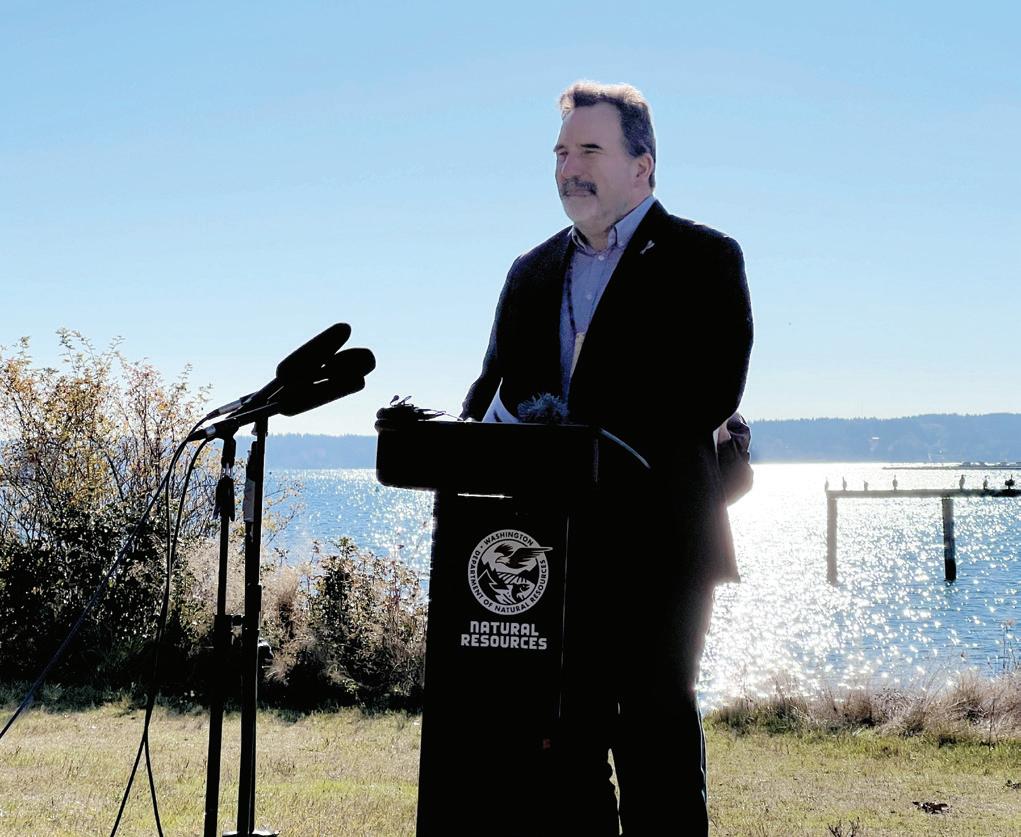
Recommendations included eliminating income re quirements for Indian students in Tribal early education programs, increasing access to mental health services for Tribal students, supporting efforts to increase the number of American Indian certified teachers, and in creasing the accuracy of data reflecting American Indi an student enrollment.
Thank you to Chief Kitsap Academy students Hai ley Hess and Lavonne Tom for speaking at the summit during the native student panel.
The National Congress of American Indians held their annual meeting in Sacramento, CA. The focus of the conference was on protecting Tribal sovereignty. There were extensive discussions of the Supreme Court and its troubling decision on Tribal jurisdiction in the Castro v. Huerta case and an impending decision in the Brackeen v. Haaland case involving Indian Child Welfare.
One highlight of the conference was the 26th Annual National Indian Women’s Supporting Each Other Hon or Lunch that honored San Manuel Chair Lynn Valbue na, past NCAI President, Susan Masten (Yurok) and Theresa Sheldon (Tulalip) who is now working for the Native American Boarding School Healing Coalition.
California Governor Gavin Newsom attended and spoke on Chair Valbuena’s behalf. Another impressive event was the culture night that featured several groups of traditional singers and dancers from up and down the State of California.
The Osher Center for Integrative Health at the Univer sity of Washington asked me to speak on the traditions and history of the Suquamish Tribe. The Osher Center
Chief Kitsap Academy held student assemblies that allowed Tribal Council members and staff to speak to the students about the history of their school and the importance of their role in working with their teach ers to provide a positive learning environment. We are seeking to decrease the number of referrals and increase attendance rates.
The University of Washington Board of Regents held their November meeting at the University of Wash ington Tacoma Campus. After the business meeting, a dedication was held of the new Milgard Hall, that will host business and engineering collaborative teaching. The Puyallup Tribe blessed the hall with a traditional song and dance and words from Tribal elder Connie McCloud. The lobby features traditional art of the Puyallup Tribe as well.
The Affiliated Tribes of Northwest Indians Exec utive Board held a post-conference meeting on a virtual platform. The financial report on the annual conference showed great attendance figures. We also filled a vacancy on the board by appointing past board member Jonathan George of the Grande Ronde Tribal Council. ***
In Suquamish culture, winter is a time for gathering with family and friends and attending to our spiritual practices. As we come out of a time of pandemic and worry, I’m wishing everyone a holiday season with loved ones that brings renewal and peace.
Leonard Forsman Suquamish Tribe ChairmanTribal Council will meet on the following dates: Dec. 5 & 12, 2022. Watch for a SUN alert with details.
Two Suquamish families have new homes. A duplex, located on Park Boulevard, was completed in early October 2022 by the Suquamish Housing Construction crew.

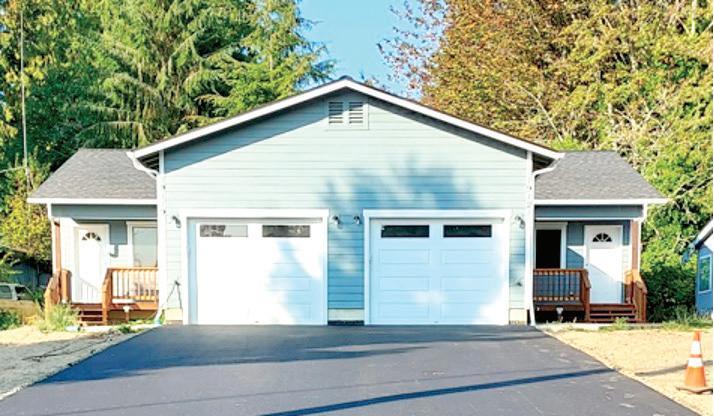

Work on the property started in March 2021 with clearing the site of vegetation and preparing for infrastructure to be installed. Construction then began for the two 1500-square foot units, each with two bedrooms, 1¾ bath, and an attached garage. Eventually, each will have a fenced yard.

The homes were allocated to two eligible families through the SHP NAHASDA low-income rental program, where rent is structured on current household income.
If you would like to apply for the low-income or the fair market rental program, please contact Housing Counselor Rachel Nellenbach (360) 394-8416 rnellenbach@suquamish.nsn.us for applications, which are also available online at https://bit.ly/STrental
By Lois “Lane” Sullivan


Here’s a wrap up of Suquamish Sports & Rec activities in recent weeks, plus what’s coming up soon:
Fall Parks and Recreation 5/6 grade team finished the season undefeated, and the 5/6, 3/4 grade boys and girls teams also had a successful season.
Pee Wee teams as well as Winter Parks and Recreation teams will start sign-ups in early December. The season will run from January through March. This year’s Pee Wee teams will be boys 11 years old and under, and girls 9 years old and under.
Parks and Recreation teams will consist of ages where we can get enough to field teams.
Suquamish and S’Klallams adults combined and participated in the Native American World Softball Championship tournament Nov. 10-13 in Las Vegas, NV.
Suquamish Youth Council and Sports and Recreation hosted a High School Boys and Girls Basketball Tournament Nov. 4-6. The tournament was very competitive, and teams traveled from all over the state to participate and prepare for the upcoming high school basketball tryouts and season.
By Craig Miller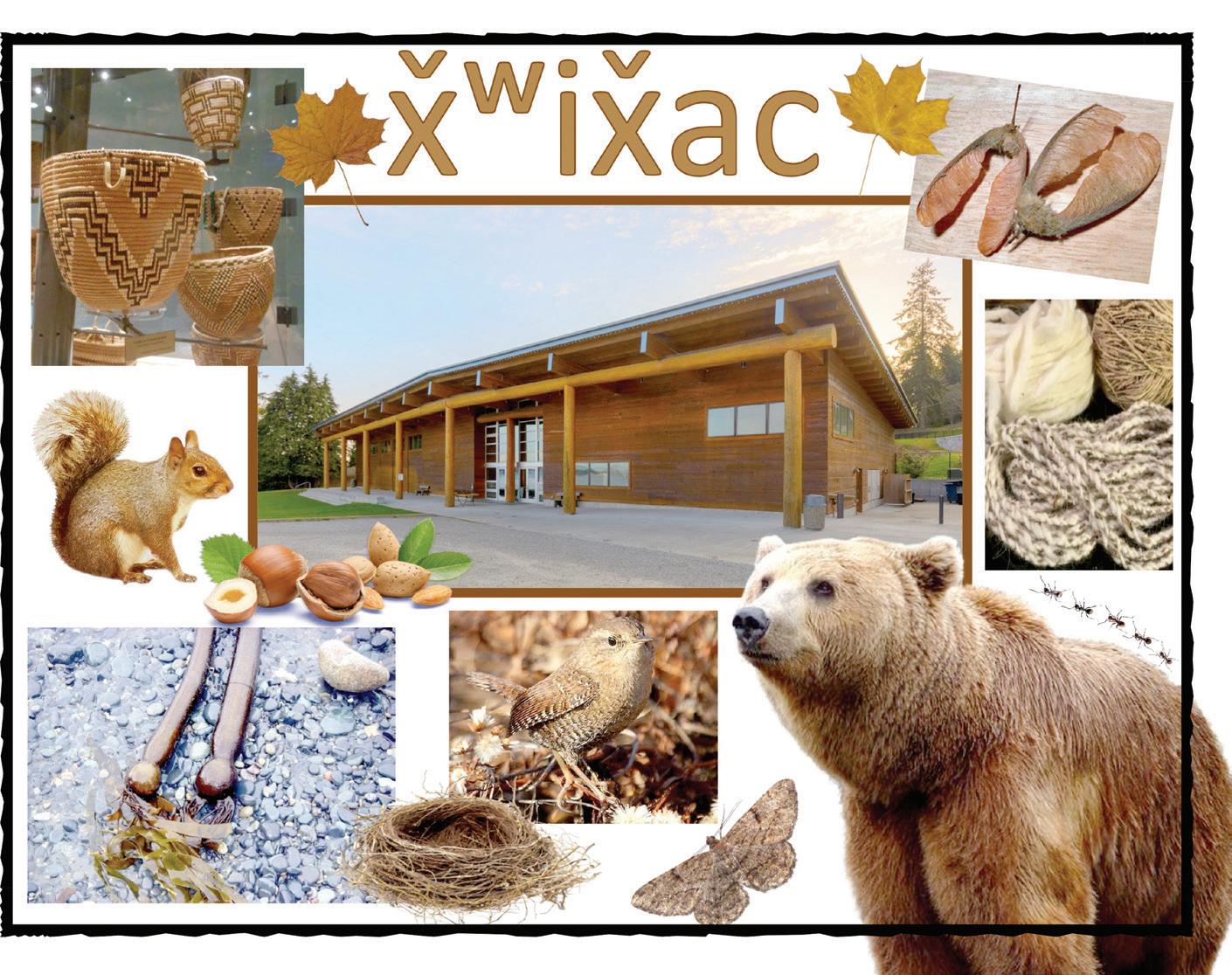


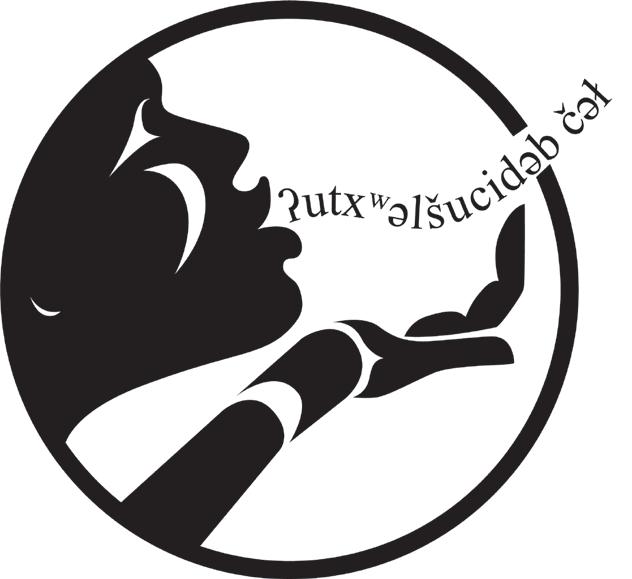







Bison and Cranberry Meatballs, and Fresh Cranberry Cider recipes can be found in Sean Sherman’s and Valerie Segrest’s book, “Indigenous Home Cooking.”










The holidays can be a joyous time for family and friends to come together to share and practice traditions. In the last few years, though, gathering was complicated by the COVID pandemic. And for many people, holidays were always times of stress. As we get used to gathering again, how can we do so in a ways that make these events meaningful — but not overwhelming? Here are 11 tips to reduce holiday stress:
1. Revisit expectations and keep them balanced. You might not get everything you want, and things might go wrong. Remember everything doesn’t have to be perfect to have a meaningful holiday. Worry and guilt about things out of your control can increase emotional pain and reduce enjoyment of the season.
2. Think ahead and be realistic with yourself and others about how much you can manage. Chron-
ic pain and illness can limit what and how much you can do. Fatigue, over scheduling, and taking on too many tasks can worsen physical symptoms and dampen your spirits. Learn to say no, delegate as much as possible, and manage your time wisely. If you choose to do less, you will have more energy to enjoy what you decide is the most important part of the season — this could be simply spending time with friends and family.
3. If you’re feeling left out, get out of the house and find some way to join in. There are hundreds of places you can go to hear music or enjoy the sights. Meaningful connection is important. Giving back to others is an especially good way to minimize your own problems and you will help those less fortunate.
4. Keep spending within the resources you have. Create a reasonable budget and stick to it. Remember it’s not about the presents, it’s about the presence
5. Remember, grief shared cuts it in half; joy shared, doubles. It’s appropriate to mourn if you’re separated from or have lost loved ones. Consider how you might honor their memory. If they were here, what would they like you to be doing? Share your memories, thoughts and emotions with others who also loved those who are no longer here.
6. Go for a walk. Many people suffer depression due to a lack of sunlight because of shorter days and rainy weather. Walking in the middle of the day can lessen SAD (Seasonal Affective Disorder).
7. Watch your diet and remember to exercise. Be aware of how certain foods affect your mood. If you eat foods high in fat and sugar, or drink alcohol, you will have less energy, which can make you feel more stressed and run down. It can be very helpful to take a walk before and/or after a big holiday meal. Ask someone to join you!
8. Plan ahead. To avoid unnecessary stress, many people don’t go to the mall the day after Thanksgiving. Think ahead of what adds to your stress level and avoid those things. Decide on a few things that are truly meaningful to you and organize your time in advance to fit these intentional things into your schedule.
9. Learn and practice forgiveness, acceptance, and boundaries. Some people will accept what you say about limitations and needs, and some will not. If some of your relatives or friends have always acted out or made you feel bad, chances are that won’t change. If you know what you’re getting into, it will be easier to not let them push your buttons. If things get uncomfortable, plan ahead with an alternative: go home or for a drive and, most importantly, adjust your attitude and thoughts.
10. Be aware of the “post-holiday syndrome.” When all the hustle and bustle suddenly stops and you must get back to the daily grind, it can be a real let down. Ease out of all the fun by planning a rest day toward the end of the season.
11. Remember to breathe, meditate, pray, practice gratitude, and enjoy alone some peaceful moments of mindful silence to renew your spirit and body.
May the holidays bring you all the love and joy they can, and may the true meaning of the season touch your heart.
By Lori Glover, LICSW, LMHCIn August, Augustina ‘Augie’ Flores-Purser, a Tribal member who has lived most of her life in east ern Washington, reached out for a chance to come home to Suquamish for a new start. “I want to begin a new life when I release, but I do need help,” wrote Purser.

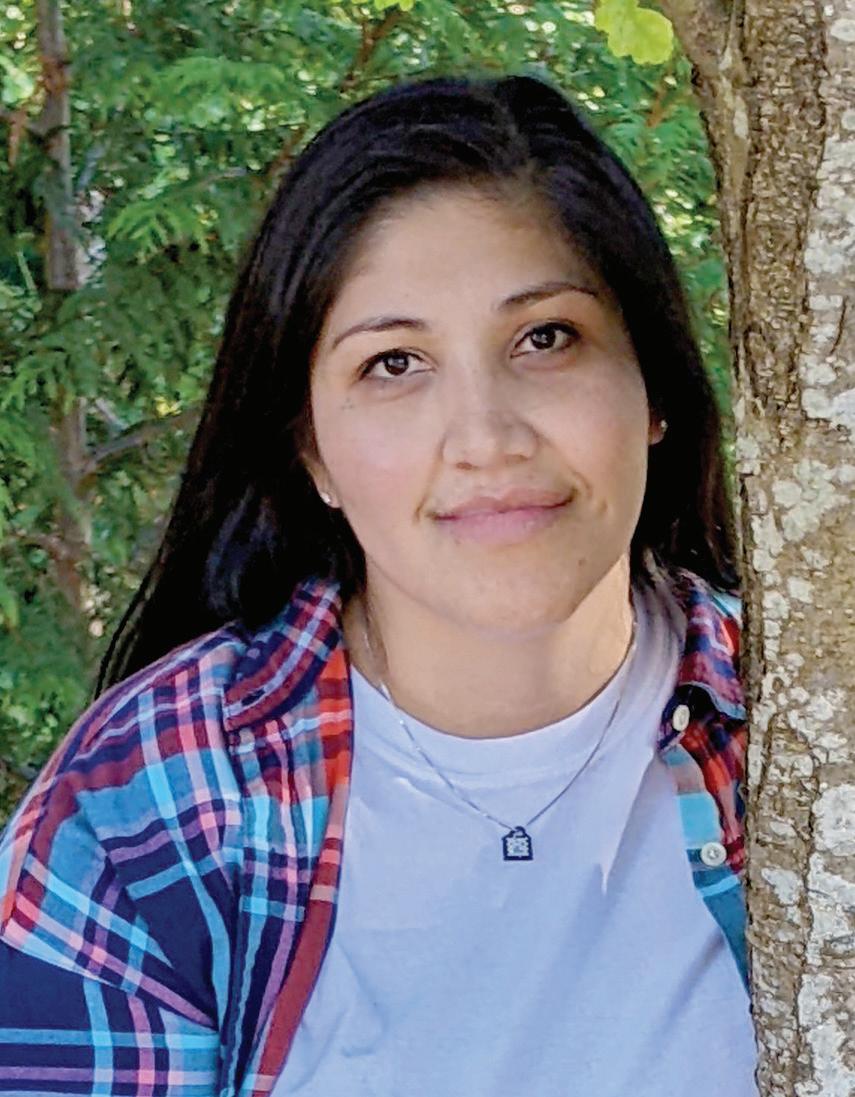
Program Coordi nator, Anna Mayes says “the Begin Again Program was officially launched on Aug. 18 when leadership team members met for the first time to coordinate care for Augie who was coming home after incarceration.” The team, consisting of members from the Wellness Center and Human Services, began meeting to implement the culturally adapted tools for screening, assessment, and transition care management that they developed in work groups last summer.
“The program has helped me with a place to stay, counseling so I continue to keep a steady mindset, and it made me feel comfortable, at home, and welcomed,” says Purser.
Since September, the team has helped Augie with mental health counseling, housing, transportation, employment counseling, and addressing her medical needs. She said, “If it weren’t for the Begin Again Pro gram, I wouldn’t be anywhere near where I am now.”
Reconnecting with her kids is an important goal. “Be ing a better me for my kids because I’ve been gone for so long out of their lives is the main motivation,” says Augie. “I know I can’t change anything that I’ve already damaged, but I can show them that I’m here now, and I’m going to be there when they need me.”
“Being a productive member and not a problem is a way of giving back. Just knowing that I can be sober, that it’s not boring but fun, feels good,” says Purser.
Reconnecting with the family that she missed a chance to know growing up is something she hopes for. She says, “I feel like there’s actually a chance to have my own place, a job, and a family life. It doesn’t seem impossible.”
For more info on the Begin Again Program, please con tact Anna Mayes at (360) 394-1325.
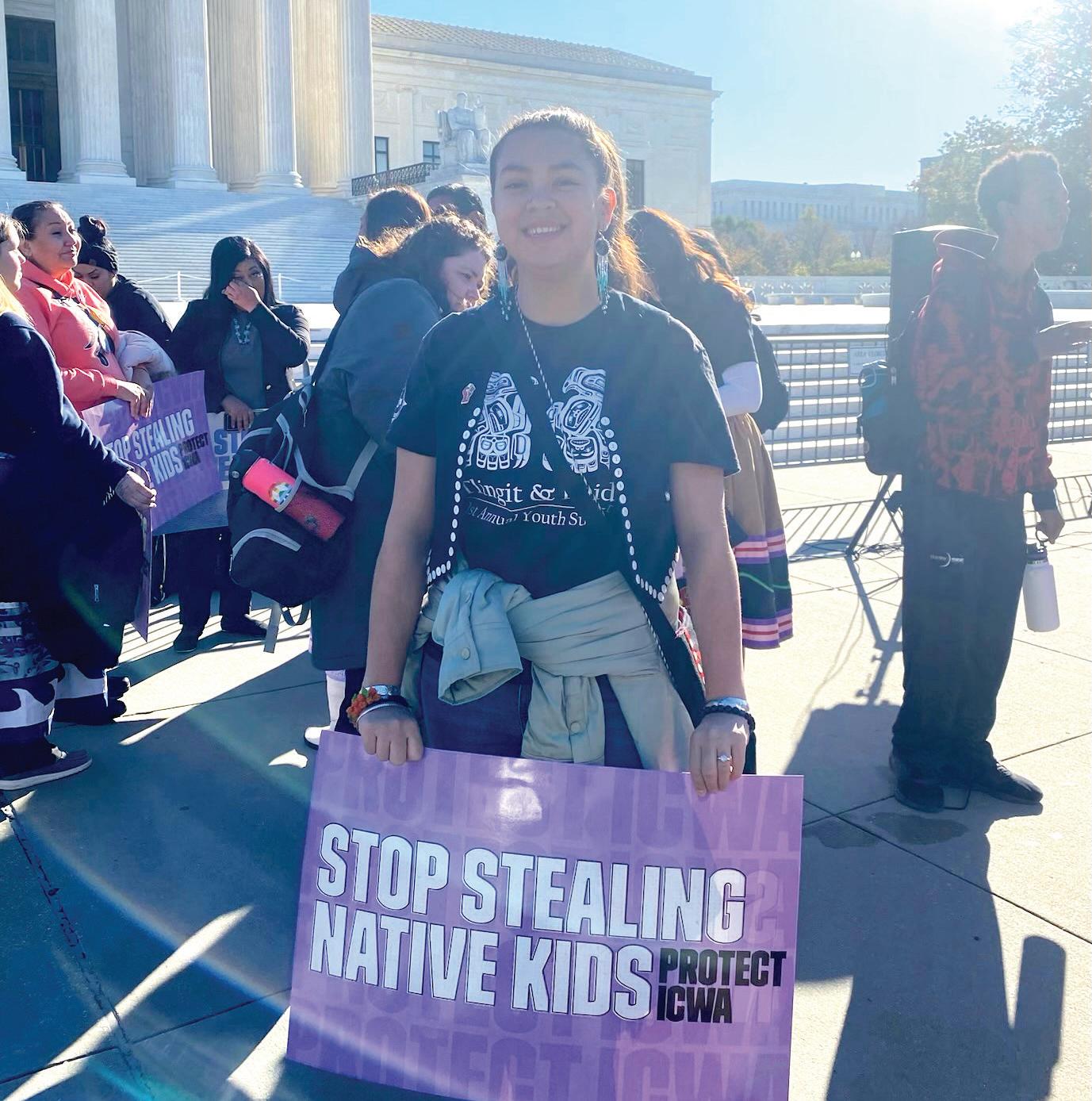
This month’s column is dedicated to TCW / Indian Child Welfare because they are weighing heavily on my heart and mind as arguments are heard at the U.S. Su preme Court that challenge the law’s constitutionality. This challenge could undercut all that the Indian Child Welfare Act (ICWA) does to protect our children and to allow us to keep our children in our communities.
ICWA requires there to be an active effort to strength en families prior to removal of children. If removal is necessary, there must be ongoing efforts to reunify fam ilies. Placements should be with extended family when possible, or inside the Tribal community. There should be ongoing visits by Tribal case workers, with re-unifi cation as the goal. Children belong with their families.
This law is vital here in Suquamish and to all tribal na tions. As a former ICW case worker, ICW Human Ser vices director, and a guardian ad litem, foster mom, foster adoptive mom, I understand the importance of ICWA and what it provides our communities and children.
Native children are overrepresented in the state sys tem, and we know that our children are abused and die
Luckily, the state of Washington has stepped up and said that the Indian Child Welfare Act protocols are the gold standard.
Here in Suquamish, our TCW program’s goal is reunification. Removing children for safety reasons is sometimes warranted. When Native children are tak en, the statistics point to neglect, which comes with substance abuse. More prevention is needed to deal with the inter-generational trauma that leads down the path of substance of abuse. We need to heal from it so our children can stay at home.
I have fostered eight children, in addition to raising my own kids. My first placement was three little kids, all under the age of five. The oldest was struggling in Kin dergarten and just having a lot of problems, but when the grandparents came forward, all three did so much better! For more than 25 years, I taught Tlingit dance and song. I got to see the kids when the grandparents brought them to dance group, and they were completely different children because their grandparents were there to take care of them.
Foster parenting is difficult — you get attached to these children coming in and out of your life. And if they get reunified with family, maybe they go back to homes that aren’t where you would want them to be.
But it is not for me to judge or to play creator or god. I get to be a safe port in the storm. I get to be some one they remember, they care about. I get to plant some seeds, I get to nurture them and help them grow, and keep them safe. I don’t get to say what sort of life they will lead. That makes it easier when you know you’re going to have to let them go.
Here in Suquamish, we are in desperate need of foster parents. Respite care is also really important. If you can’t be a foster parent, maybe you can take kids on a week end or a Friday night so foster parents can get a break.
As most people in the Tribal community know, TCW has been struggling. It is a department rife with turn over. I’m working with TCW, Human Services and the court with the goal of building the department up so that it can serve as an example of how tribes can run their own TCW departments.
in that system. Or they run away. Or they are moved out of state and away from their families. It doesn’t help our kids when they’re out there by themselves without a community to back them up, or aunties and uncles.
During COVID and staff transitions, the TCW com mittee wasn’t meeting. I look forward to working with the committee when it is functioning again to develop practices, protocols, and standards that will stabilize the department and keep our children and families safe.
By Catherine Edwards Suquamish Tribe Executive Director






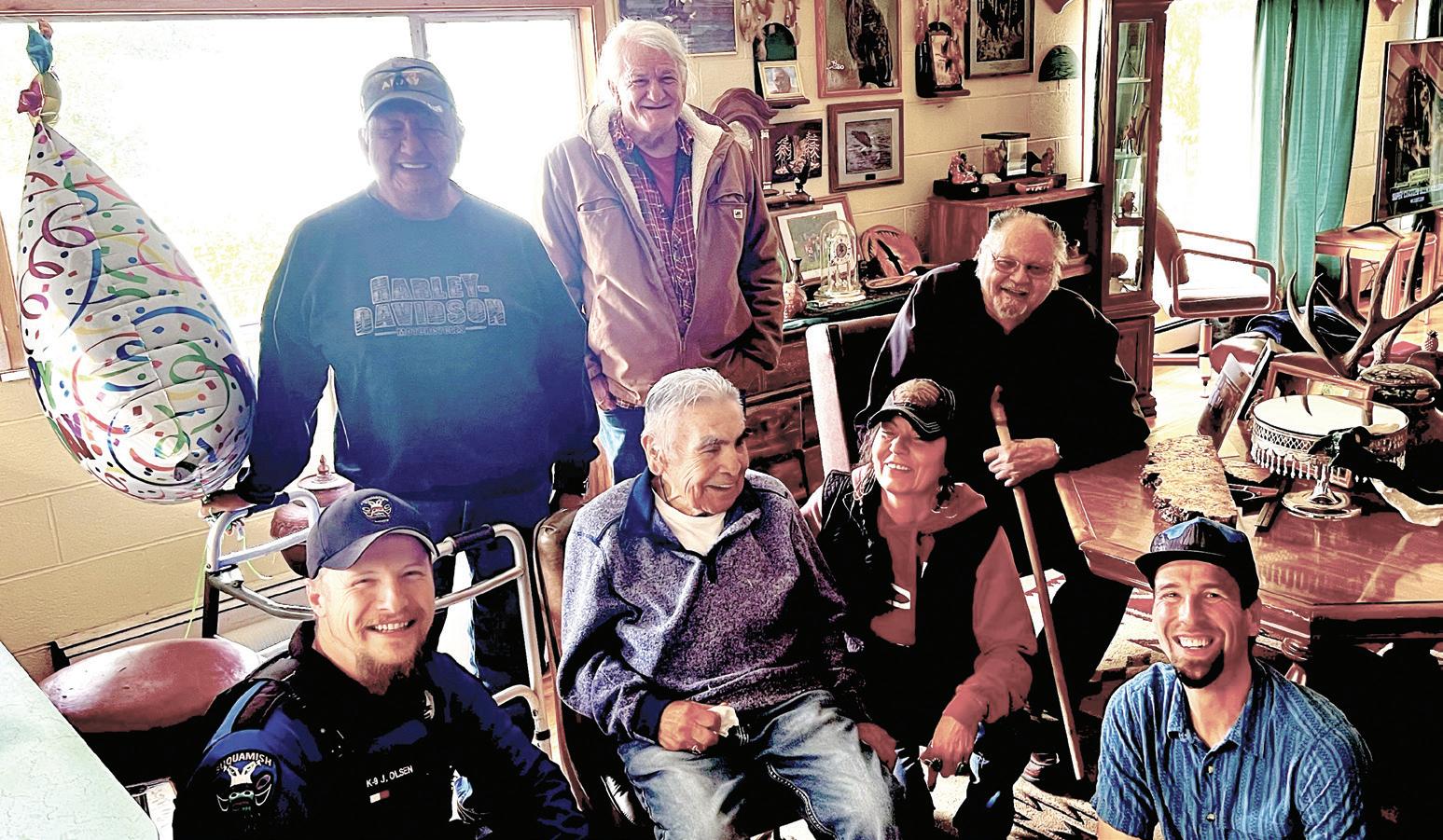
Tribal Elders: Effective Jan 2023, you will not receive your Medicare Premium Reimbursement until Health Benefits has received your current year’s Social Security letter.
Due to Medicare Premiums changing each year, we must have your An nual Social Security Letter before we can reimburse you. Social Security sends this letter out to you every December or Jan uary. Once we receive this letter, you will be reimbursed the Medicare Monthly
Premium deducted from your monthly social security check. If we don’t receive your letter until February or later, we will reimburse you for the previous months back to January of that current year. These reimbursements are sent out by Finance along with your Elder’s pay ments.
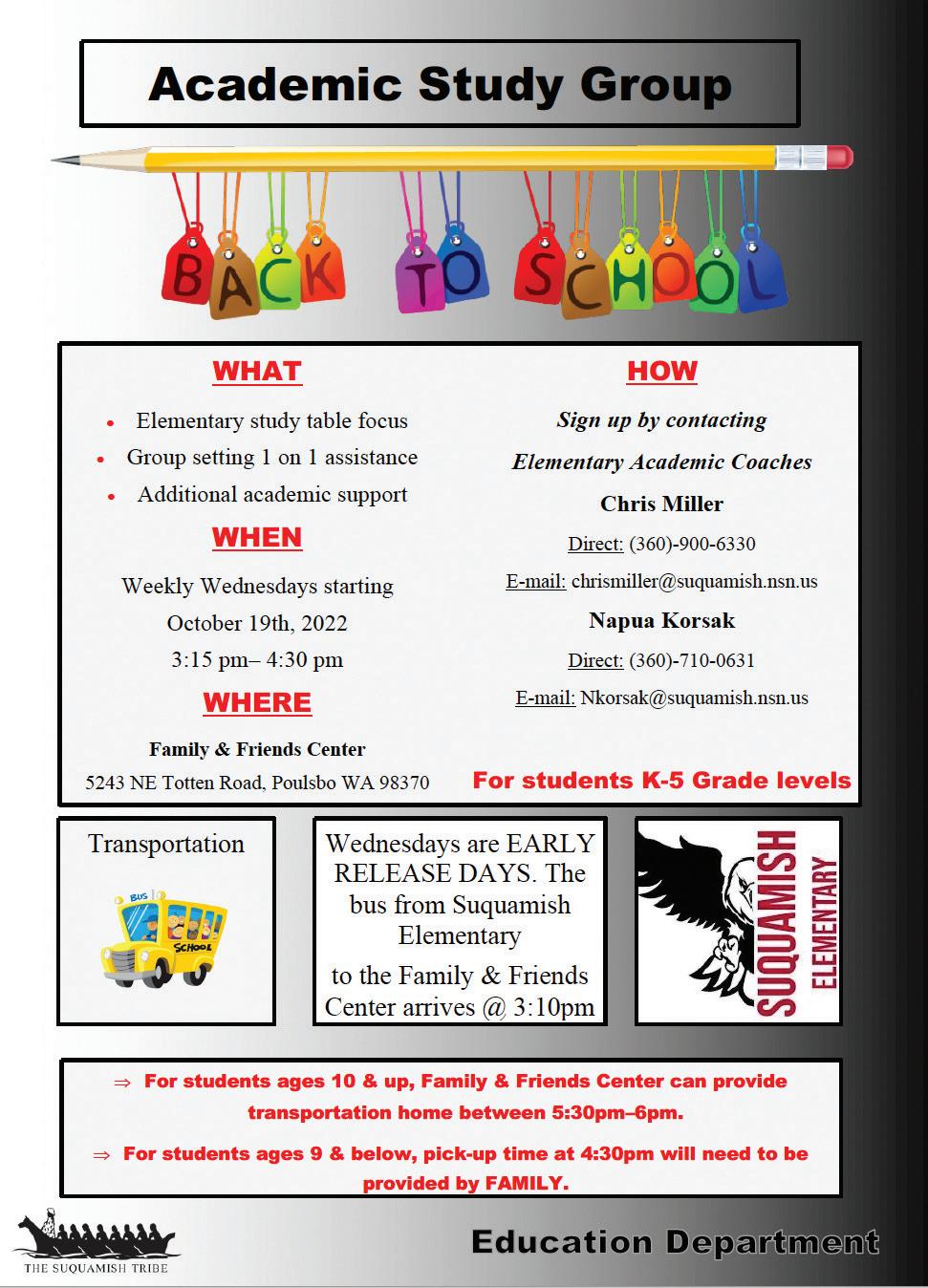
If you have misplaced your letter, we can help! Come see us and we can help request a new copy.
Health Benefits (360) 394-8424 health_ benefits_email@Suquamish.nsn.us

we are at the end the year, and it has been a very different one to say the least with hot spring and sum mer, very short fall and now winter is upon us, cold and wet. Please keep an eye on your neighbors and Elders, and please make sure to keep warm and stock up on things in case the power goes out for any period.
I am working on trying to make sure that my files are safe and my work is allgood until the next year and hope to be able to purchase a new better computer.
I did an interview for the new Oral History Project for the Suquamish Museum and it was interesting to be on the other side of the microphone. I
think it went very well, and I hope to see the transcript. Please do this with Heather and document your life story, it is important to let the future genera tions know what our lives were like. We experienced so many changes that we will never understand.
I am also hoping to continue to do in terviews with folks on hunting, fishing, gathering, weaving, and other topics you wish to share.
Please contact me at mjones@suqua mish.nsn.us or (360) 394 8526. I will gladly make an appointment to work with you.
By Marilyn G. Jones
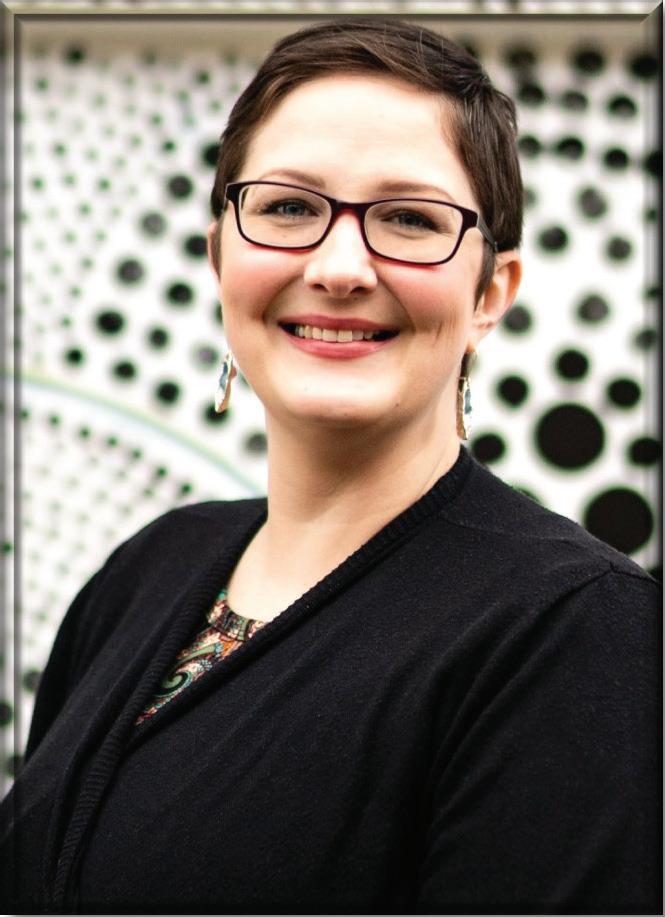


Legal Notice is provided to Daniel Carl Davis (unenrolled Indian) of the Suquamish Tribe’s request to the Bureau of Indian Affairs under Section 205 of the Indian Land Consolidation Act, 25 U.S.C. §2204 (a) to purchase your undivided interests in Tract 11-D on the Port Madison Indian Reservation. The Tribe owns over 50% of the allotment and under federal law this purchase does not require your consent. You do have the right to appeal the Bureau of Indian Affairs’ decision.
Please contact Bill Holway, Trust Realty Officer, at (360) 394-8456.

December 1
Cameron Lawrence
Cassady Hill Jeffrey Carriere Katelyn Carper Meadow Sigo-Carr Mya Smith Zane Peterson
December 2
Foster Jones Heather West Koebyn Purser Troy Ayres
December 3
Ana Edelstein Grace Alexander Susan Parkhurst
December 5
Cheyenne Colomb Haylie Mabe John Villanueva
Lewis Bayne Sammy Mabe Victoria Smith
December 6
Guadalupe O’Brien
Patricia Chargualaf Tiana Lawrence
December 7
Carroll Crowell Carter Rhodes Dylan Amick Sandra Power Tamara Thomas Trentin Moss
December 8 Breezy Webster Eliza Kegel Wahim Williams Jr.
December 9 Andria Golden Kristina Simons Mary Webster December 10 Deantre Rubeck Samael Pastrana Sienna Oswalt

December 11 Garnet Mabe
December 12
Adelyn Oswalt Alicia Yates Celeste Loneia Colleen O’Brien December 13
Connor Valois Jeddadiah Adams Shaunie Cordero December 14 Olivia Ferrara December 15
Joshua Timmerman Rebecca George December 16 Danielle Morsette Jason McClurg-Santos Martin Talmadge Mellissa Pondelick December 17 Sierra Sorensen
December 18
David Sigo Jr. Felician Belmont
December 19 Ashley Boure-Jones
Chandra Nease Logan Mabe Pierre Perrot Trey Kumpf
December 20 Donald Jones Nicholas Alexander December 21 Arthur Brown
December 22 Delmont Ostenberg James Mabe Nancy Martinez Richard Purser We-Laka Chiquiti Jr.
December 23 Agnes Pratt Julia Hommel Tony Snorteland
December 24
Azeneth Solano-Sigo James Cordero James Suarez Lisa Jackson December 25 Kyle Dozier Nancy Sigo Toni Smith December 27 Amiria Lawrence Anissa Ostenberg Hadley Simons Jackson Purser Patricia Blomberg Tyee Lawrence December 28 Lincoln Lawrence December 29 Amber Boure Carsyn Maloney Daniece Williams
December 30 Charissa Sigo Jacquelyn Cheek Linda O’Connor
December 31 Desean Santos Jerry Porter Randy George Victoria Welch Wayne George







